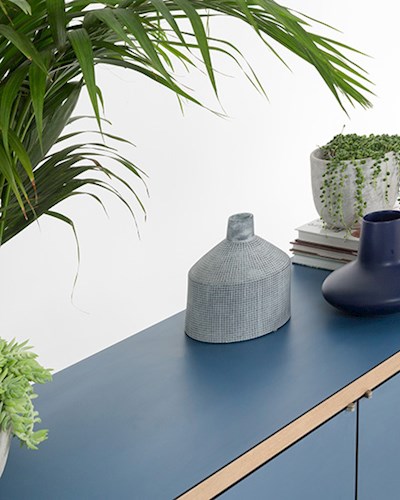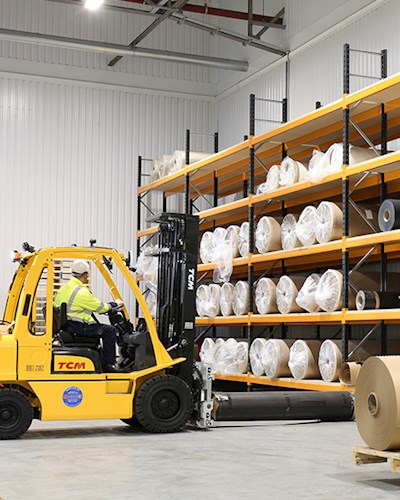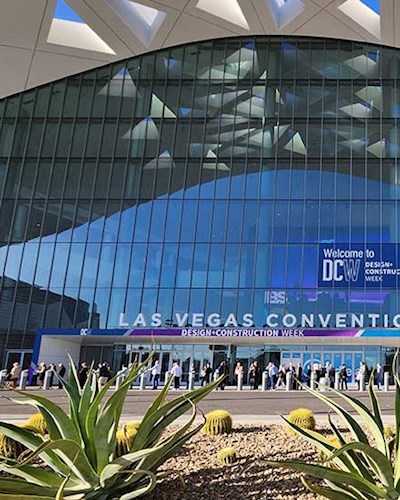SurfaceSet® 2020 Invigorates the Mind within Educational Design
SurfaceSet® 2020 Invigorates the Mind within Educational Design
Welcome to the SurfaceSet® 2020 collection from Formica Corporation. Formica Group’s international design team spent months conducting extensive style and design research to craft this exciting new line of highly durable products in beautiful colors, patterns and woodgrains.
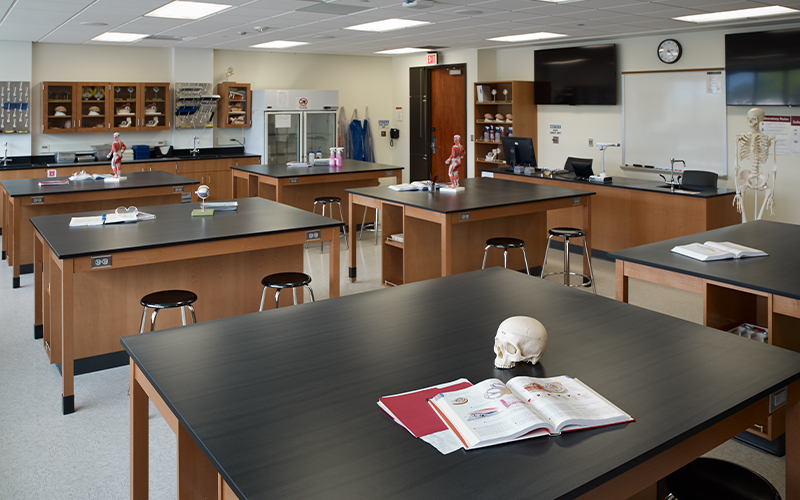
Note: This article was published prior to the Covid-19 pandemic, which has greatly impacted design best practices.
Creating a Warm, Collaborative Learning Environment
Design plays a critical role in creating positive and efficient learning spaces. Well-designed contemporary schools engage and inspire students through use of vibrant color and a variety of opportunities for individual, interactive and multi-sensory learning in which material selection plays an important part. By selecting surfaces that are hygienic, durable and easy to maintain while also being fun and creative, educational designers can generate spaces that support learning while following requirements to meet the needs of not only the students, but also educators, administrators and facility management.
Vivian Chai is well-versed in the design needs of colleges and universities. As Project Design Leader at Chernoff Thompson Architects (CTA) in Vancouver she specializes in design work for both government and post-secondary institutions. She said there’s an increasingly important trend of creating the “third place” in schools, where people gather outside of where they live (the first place) or work (the second place) and connect.
“Students come together to collaborate, work, learn, connect and be creative. We want to give them a relaxed space that’s about even more than just learning and working; it’s about total wellbeing,” Chai said.
“We want to make sure the space our projects create is engaging and gives students a sense of control and of having choices in their surroundings—addressing a wide range of personalities, needs and expectations.” This has far-reaching implications when it comes to selecting color, pattern, the overall shape of the space, and the furniture.
“Designs shouldn’t feature just one standard accent color or aesthetic; people have different temperaments, preferences, modes of learning and moods on different days,” Chai said. Color palettes that engage students, material choices that will stand up to students’ carefree use, various furniture arrangements that offer students options for sitting or standing and being a part of a group or separate are all important elements in higher education design. “All of this comes together to provide student engagement, choice and control, and ultimately, the sense of wellbeing.”
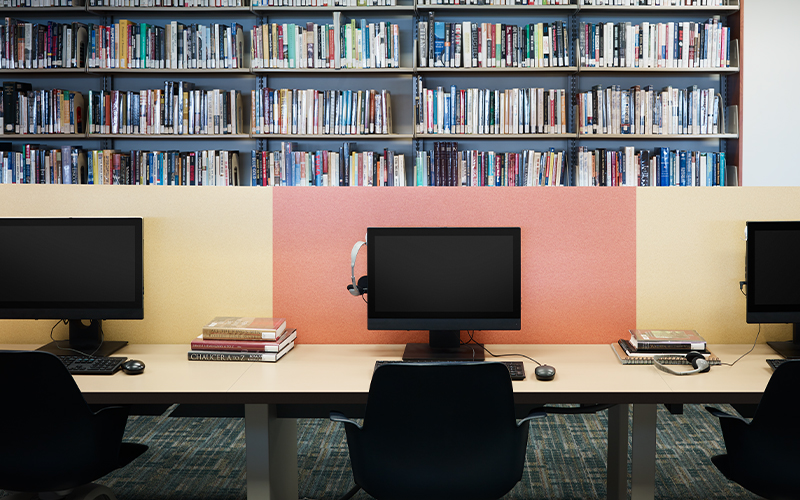
From an overall aesthetic perspective, Chai noted that her clients are looking for individuality in terms of colors, patterns and the design application, but they don’t want to be too trendy. “Often times, we find that colleges and universities look for timeless, elegant designs that are widely accepted from a design standpoint,” she added. Chai said this encompasses nature-inspired themes that give students and staff the sense of being connected to the calming qualities of the world outside. “Educational institutions seek design that evokes calmness not just in terms of the site and design but also for accessibility, including for individuals with depth perception challenges and autism. We need to think about how these individuals will perceive the space too.”
When it comes to research facilities and “wet” labs, color choice and chemical-resistant surfaces are key. “For lab facilities that don’t have a lot of natural light, we try to bring the lightness in with our color choices. Clients want a clean environment and often prefer to use white on lab counters to show dirt and not hide it,” Chai said. “We also specify chemical resistance for lab spaces and sometimes epoxy products, too.” Chai said she will typically use high pressure laminate for computer or other “dry” labs, but in this case, pattern is important. “Most clients want a pattern to hide scuff marks or dirt for high-use horizontal worktop surfaces.”
Chai concluded by saying that the firm’s many recent educational designs have a strong voice by combining different punches of color, graphics and texture with an overall feeling of nature and hominess. “Designing for younger adults, we always try to find opportunities to add some fun elements into the design, but at the same time we need to go through steering committees and facility management teams. Being able to find the balance is key. Everyone needs to feel comfortable and be able to accept the design based on an array of factors,” she said. “We’re not just designing something that sells. We want to know that everyone is truly enjoying the space.”
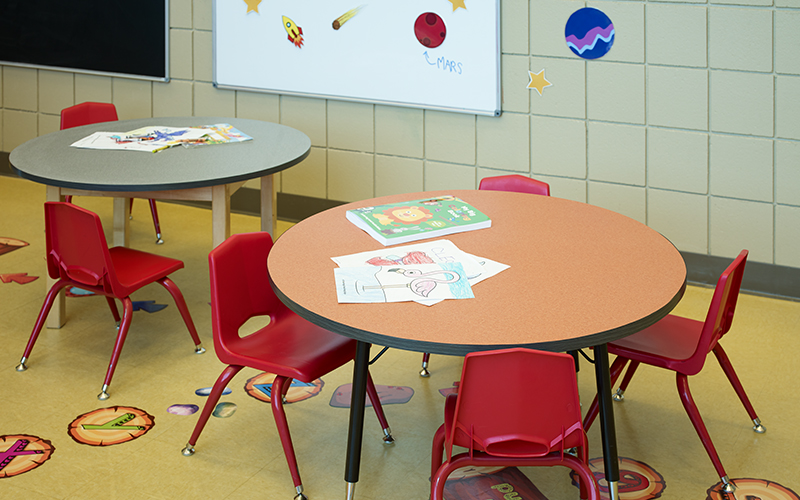
Key Functionality and Aesthetic Considerations for Surfacing When Designing Educational Spaces
Designers working to create a memorable, collaborative environment in education look for durable, interesting surfacing that will last for years.
Color: Chai said that when establishing the color scheme for a new design, everything starts with the flooring. Functionality and availability take lead. After that, laminate and paint selections are made. “We’re seeing a lot more blue and green tones, especially on the West Coast. There are also yellows and oranges, but rarely pink or purple,” she said. Chai continues to use a range of field colors.
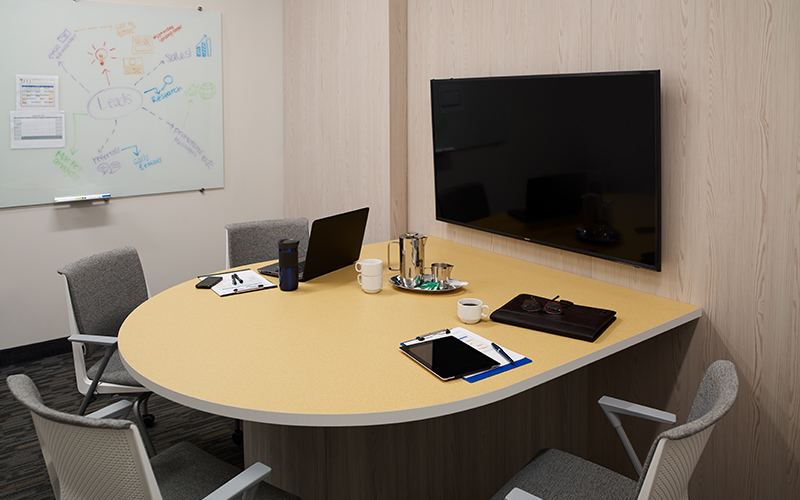
Pattern: Chai likes using accent colors with texture or pattern that from afar isn’t noticeable, but which becomes clear up close. “This gives some longevity and added interest to the design and lets it stay in the game longer because it’s more timeless than a big fun pattern that gets outdated quickly,” she said. “Formica [Corporation] is very strong when it comes to textures,” Chai added, noting the sculpted finish adds a lot of visual texture interest for vertical surfaces.
Ease of maintenance: “It’s important for all finishes to be easy to maintain,” Chai said. “It helps to have the facilities management staff involved in the design phase, so we can understand their needs—and at the same time, they understand how to take care of the new space.”
Durability: Surfaces throughout colleges and universities must stand the test of time as there can be many years between redesigns. High pressure laminate features impact and scratch resistance, key properties in the fight against wear and tear.
Woodgrains: “The trend in woodgrain looks for any material—wallpaper, ceramic tile or laminate—is to be natural. We’re seeing lighter colors like maple and birch that are more universal and less trendy within higher education environment,” Chai said.
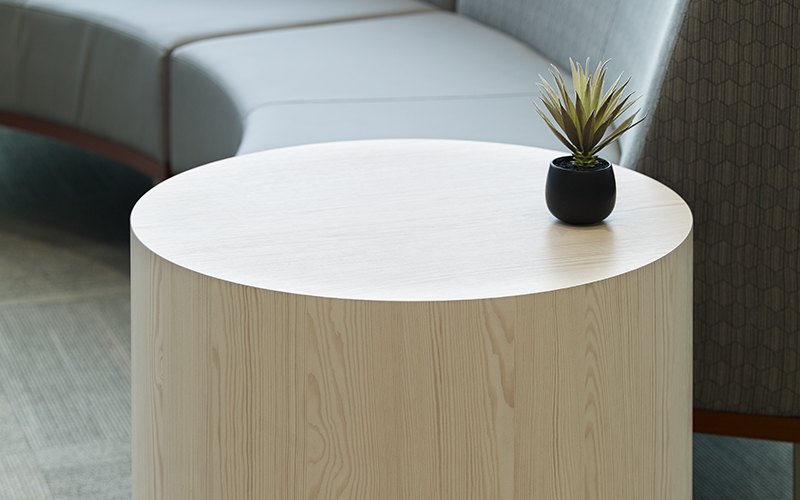
Sustainability: Chai mentioned that in 99 percent of the firm’s projects, the client is looking for LEED certification. This means sustainable materials such as paper-based laminate are excellent choices when it comes to surfacing.
Creating Educational Communities That Inspire Using Formica® Brand Laminates
Formica® Brand products can enhance the experience of students and staff through a myriad of inspiring applications throughout educational spaces. They are ideal for countertops, casework, millwork, wall panels, cabinets, furniture, privacy partitions, handrails and much more.
The SurfaceSet® 2020 laminate collection offers ease of maintenance with over 30 new Formica® Laminate colors, patterns and woodgrain designs that will energize your next project. These complement our wide range of existing products, giving you and your clients the options you need to create memorable designs for students, teachers and administrators.
Everform™ Solid Surface: Create a variety of design concepts including vanities and worktops to achieve a seamless, durable surface. The non-porous structure also makes this surfacing option hygienic and resistant to water.
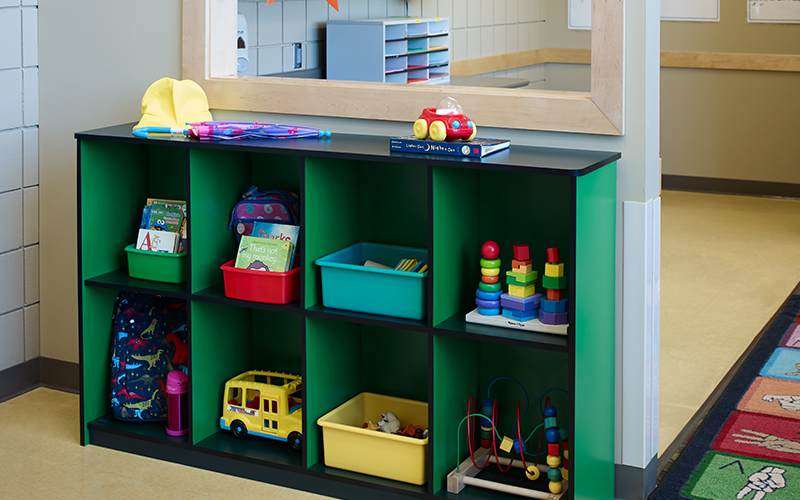
Chalkboard®Formica: Offer new ways for students and staff to communicate and share ideas with chalkboard surfaces that put people in touch.
Formica® Compact™ Structural Laminate: Add strength and functionality to a variety of applications such as lockers and restroom partitions.
Formica Envision™ Custom Laminate: Customize any learning or common area with high-performance laminate that features a unique design, photo, logo or illustration.

